Aruba Underwater, Cartagena Above
Crossing the Caribbean, sailing smooth waters, and pointed toward South America. Great service and food aboard the Coral Princess. The ship’s 90,000 tons of mass felt reassuring beneath our feet — we relaxed as we watched the waters slide by, and marveled at the gorgeous appointments on this luxury vessel. A world apart from our usual RV treks. Watching ourselves get farther and farther away from Florida and the USA, and marveling at the deepest blue we’d ever seen, we spent the first two days getting used to the ship, and the ocean.
Our ship would circumnavigate the Caribbean, docking at various ports of call. The first of these was Aruba, just fifteen miles off the coast of Venezuela. The island itself is not part of Venezuela, but oddly enough a part of the Netherlands Antilles. Since their original claiming, sovereignty has changed more than once, and local language is an amazing, polyglot, seven-source trade language called papiamento. Aruba is one of the ports where the Coral Princess (all 987 feet of her) can directly dock. We pulled in just after first light, passing the awakening cargo docks – – –
– – – and nestling our mighty ship in amongst the other denizens of the busy port.
Shore visits are brief on this type of cruise, and they typically last only six hours or so, including getting on and off the ship (no mean feat for 2000 passengers). So, even though there are many sights to be seen on this small island, of necessity we opted for only one — the underwater tour by submarine. The on-land parts of Aruba are certainly interesting enough, and we’ll miss seeing the iguanas, but the marine life in this whole ABC island area (Aruba, Bonaire, Curacao) is renowned, and we headed for the mini-sub.
We were at this point about as far south as we’d go on this trip, and the February weather was – – – sultry. Mid-80’s and about 70% humidity. Obviously, it’s short pants and short sleeves weather, but for one consideration — the Zika virus. We received many precautions to wear long pants and long sleeves (aka swelter-clothes) to avoid mosquitos nibbling our skin and injecting us with obnoxious disease(s). Hmmm, how to choose between influenza or heat prostration? What a selection. We guessed (correctly, it turned out) that salt-air seaside environs wouldn’t harbor very many mosquitos, and we wore the short clothes mandated by the tall heat. Good decision. At 10AM, we were seeing 85F and 70%RH. Cool for the tropics but sauna-esque for us.
We crowded into a covered shuttle boat, swung away from the dock area, and took the short trip out to the coral reef where the sub was moored. We got there just as a previous tour was surfacing.
The sub was making quick round trips with bundles of tourists. The sub was recently designed just for this purpose, and it was pretty nicely set up. Each occupant has a decent porthole view, the air conditioning worked splendidly, and we had a comfortable ride without the necessity of regulators, wetsuits, or ear-clearing. We received our mandatory briefing before departure, a bit different from above-the-water excursions. Instead of the oh-so-routine life-jacket drill, we were schooled in the use of a submarine evacuation hood. Apparently it is able to keep one from drowning in an underwater abandon-ship event. Don’t ask me to repeat what I heard – I was laughing too hard to hear it.
And yes, that guy got a fat tip, ‘cause he usually doesn’t actually don the hood; we begged him to do it for the picture.
Without further ado, the sub plunged gracefully to the bottom, which varied considerably in depth. The bottom was covered in corals and sponges, and multiple varieties of small reef fish were swarming around the sub. Unfortunately, the sub is not equipped with bright photographic lighting, and all my photos are heavily blue-tinted by the water’s filtering effects. Light was dim, and the sub was constantly moving, so there’s a lot of blur too. No nat-geo pix here I’m afraid, but good enough to give you an idea of the experience.
Several small ships have been scuttled in the area, to provide a starting point for coral reef growth. This is being done in many areas around the world, and is helping somewhat to offset the many things that people do to damage coral reefs. The newer sinkings are still fairly clean, but the older ones show significant accretion of life.
We reached a max depth of 136 feet, how wonderful to not feel our ears pop, or have to worry about decompression times like our previous scuba experience. Back on shore, we had a few minutes to indulge in the usual tourist-trap shopping rituals. My Mom was kind enough to model one of the temptations for us.
What could possibly top that? We headed for the ship and set sail for Columbia.
We approached Cartagena, Columbia, again in the early morning light. This type of cruise sails at night and visits by day, that’s the drill. And again we had only a few hours to experience one of the principal cities of this fascinating country. The city tours seemed modestly interesting, but we opted for a harbor tour, aboard a “real” sailing ship. Here commenced one of our most comical bus rides. We walked about half the length of the ship, waited in line, and boarded a standard tour bus. It pulled away from the ship, turned right across the bow of the adjacent ship, and stopped. We had arrived, approximately 100 yards from our departure point.
The ship was the Spanish galleon Galeon Bucanero, and I was never able to get a long-distance shot of it. You can see someone else’s snapshot at another web site here.
Turns out the the ship is owned and operated by a Norwegian captain who sailed and motored it all the way from Norway many years back. He’s been making a living in Columbia for several years, but is hankering for a Puerto Rico venue and some more stable politics. I garnered all this while we gently motored around the harbor and saw some of the sights.
There was a big shade cover, and about half the tourists had some sun protection. The rest of us (including this blog photographer) got the tops of our toes sunburned a bit.
The cargo docks were right next to the Coral Princess, and the enormity of the ships and cranes was truly impressive. Looking at the picture, remember that each of those tiny little boxes is about eight feet high.
The city’s modern hi-rise dominates a large portion of the landscape.
But there are other views, like the old prison, and the captured drug-smuggling submarines. These are clearly a hit for the tourists. But I wonder if they pose a disincentive to any of the smugglers? The subs reputedly cost $1M apiece, but that’s not big money for Columbian drug lords these days. Lately, they have become so brazen that they openly use surface craft – – – with 50-cal machine guns mounted on deck. When the Coast Guard choppers start to follow them, they open fire, and the fragile helicopters withdraw. Time to bring in the Apache attack choppers….
Rising above the cargo cases and cranes is the Popa Monastery. It is situated above a stark bastion of ancient sheer cliffs, and today flanked ignominiously by radio towers and the busy port. Its 17th-century builders likely did not foresee its future surroundings.
During its early years, Cartagena was a walled city, with an impregnable fortress to ward off the aggressive pirates of the era. The formations are still standing today, testimony to their robustness against the bombardment of cannon shot, weather, and time.
At the far end of the harbor (that our big galleon could reach), we encountered one of the more remarkable sights of the day. The old historical section of the city raised its charismatic skyline, against a foreground of the most impressive yacht I’ve ever seen. The Attessa IV (look it up here) is a $250 million indulgence by an east-coast billionaire Dennis Washington. I don’t know whether that value includes a mere $200,000 helicopter. At 330 feet, this boat is a full one-third the length of the Coral Princess.
Mom’s going to be 94 in a few months, but you’d never know it. Here she is, standing out in the tropical sun, squinting like a salty old sailor at the far horizon. One of a kind, that’s my Ma.
Coming back to the big cruise-ship dock, we pass by the tall skyscrapers again. Their modernity is a sharp contrast to our centuries-old square-sail rigging. Must have passed through a space-wormhole.
Back at the dock, one of the Coral Princess’ fellow cruise ships looms over our tiny craft. The Princess is just the other side of the Celebrity Equinox, about 150 yards away. We walked it this time and beat the buses back “home”.
Before boarding the Princess, we took a side-trip to a dock-side attraction. There was a nice aviary there, with the friendliest cockatoo that ever lived. This guy (gal?) had an absolute fascination for the brass fittings on my Tilley hat, and once he started climbing on me, he just would not get back on his perch. I tried to boost him off several times, and finally had to scrape him off and step quickly away. He was less tenacious with Karin, but still pretty persistent. I don’t want to clog up this post with dozens of photos, but I’ll upload more of them to Facebook – it was quite a giggle.
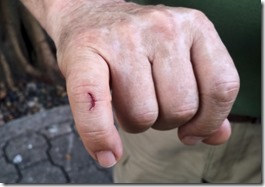 Later, on the way out of the park-like area, we encountered a bright macaw, and he seemed as tame as the aviary cockatoo. But when I put my hand up to him to climb on, he must have thought I was offering food. He latched that enormous beak around my right pinky finger and almost severed the damn thing off my hand. I was yelling and shouting, but I didn’t want to yank away and hurt the bird, so I just held still and waited for him to let go. He finally figured out he wasn’t going to be able to chop off my finger, so he released me. He seemed undaunted by all my noise and histrionics. “So where IS my food, huh?” The injury doesn’t look like much – but you gotta believe me, that HURT!!!
Later, on the way out of the park-like area, we encountered a bright macaw, and he seemed as tame as the aviary cockatoo. But when I put my hand up to him to climb on, he must have thought I was offering food. He latched that enormous beak around my right pinky finger and almost severed the damn thing off my hand. I was yelling and shouting, but I didn’t want to yank away and hurt the bird, so I just held still and waited for him to let go. He finally figured out he wasn’t going to be able to chop off my finger, so he released me. He seemed undaunted by all my noise and histrionics. “So where IS my food, huh?” The injury doesn’t look like much – but you gotta believe me, that HURT!!!
It was a two-hour tour, and what we got was barely a glimpse of this famous city – but that’s sort of what this type of cruise is all about, a sampler so to speak. Get the sense of a place and decide if you want to come back and stay longer.
Next stop, the crown jewel of this trip: the Panama Canal.
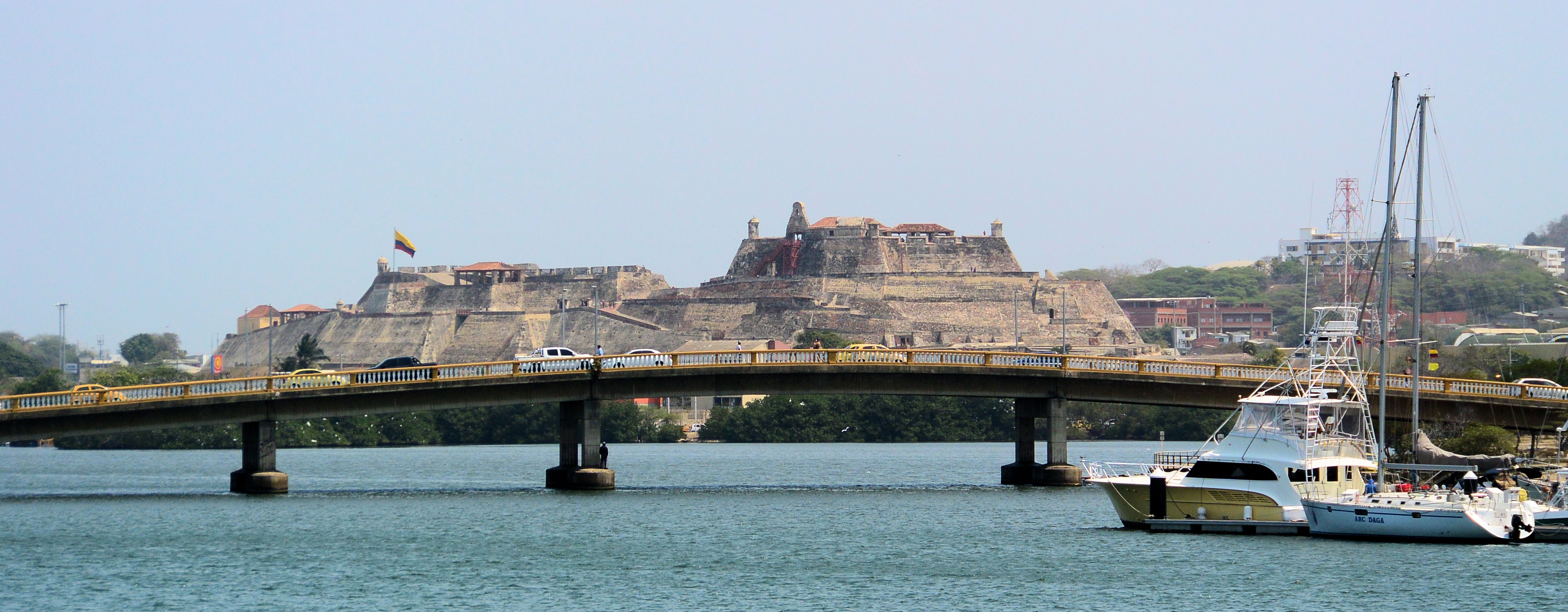
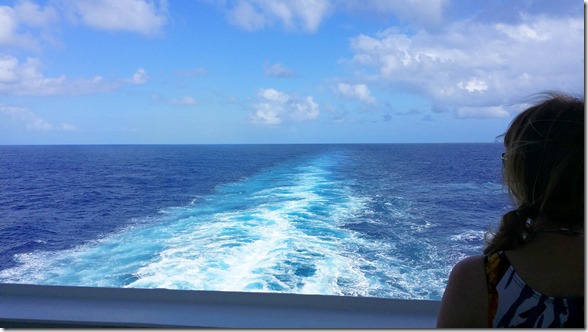
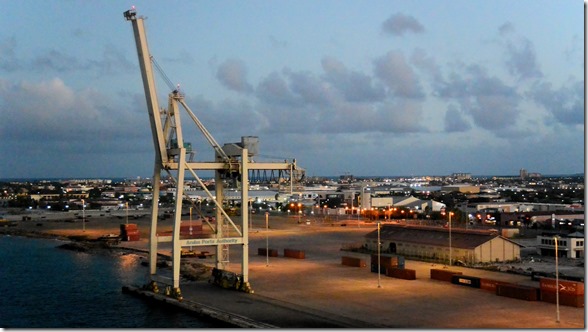
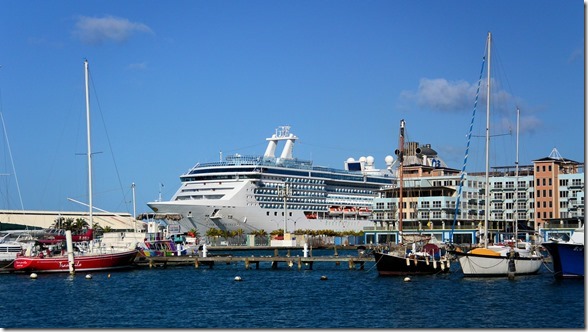
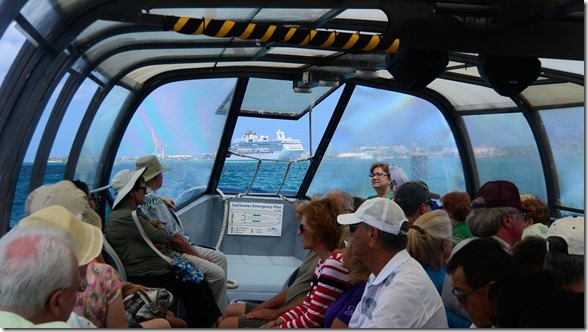
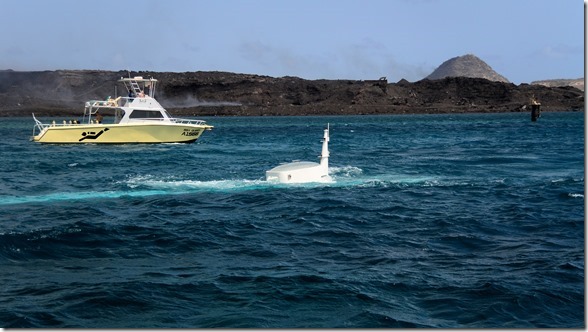
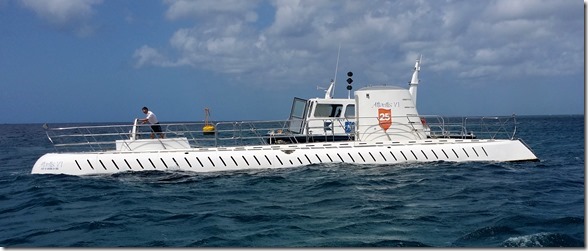
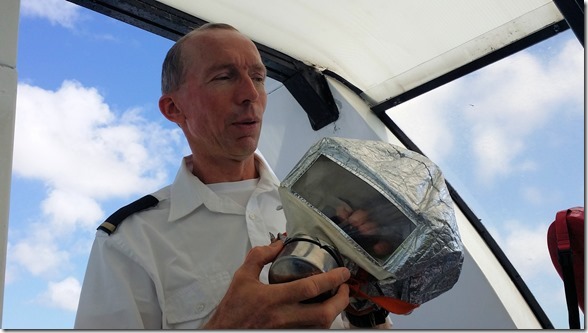
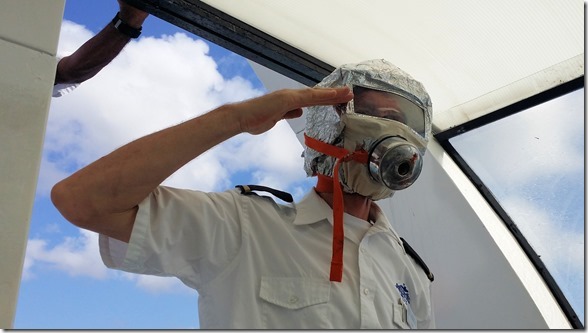
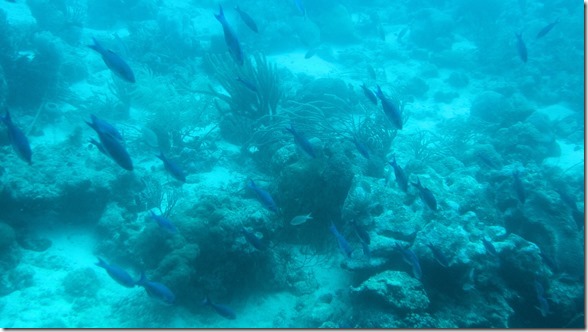
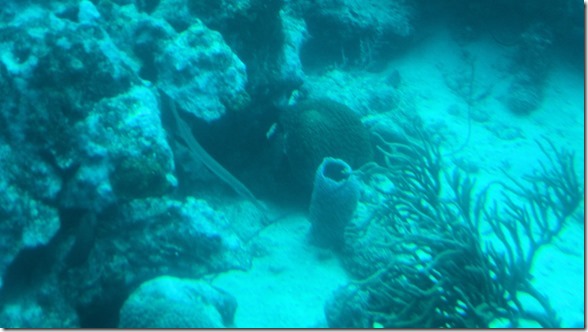
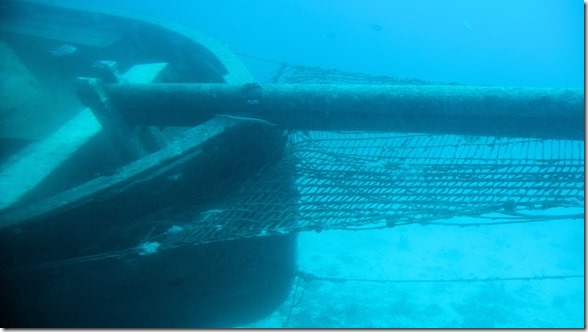
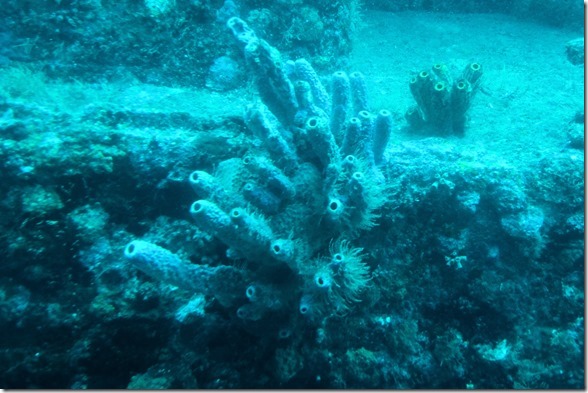
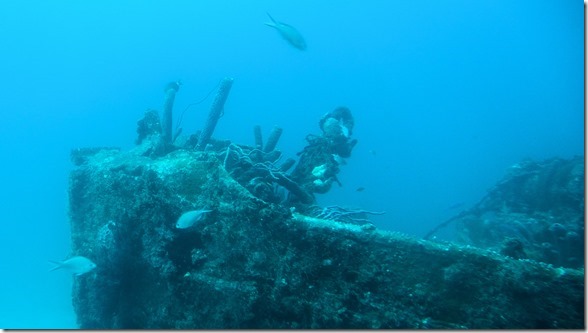
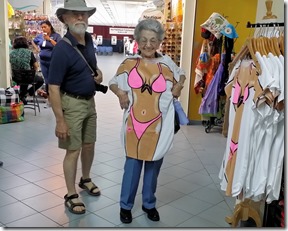

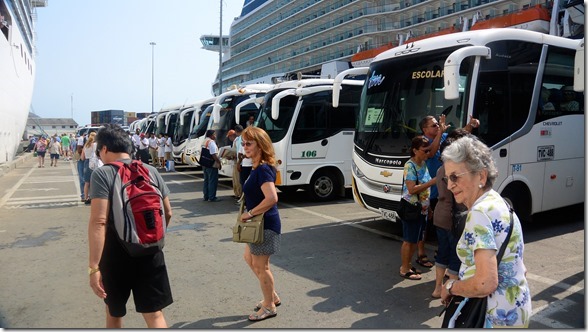
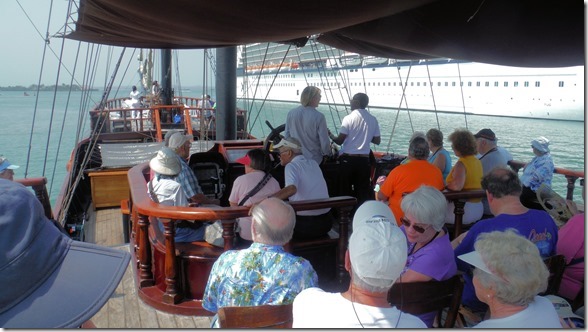
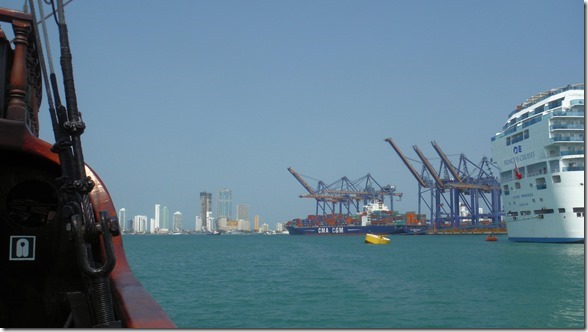
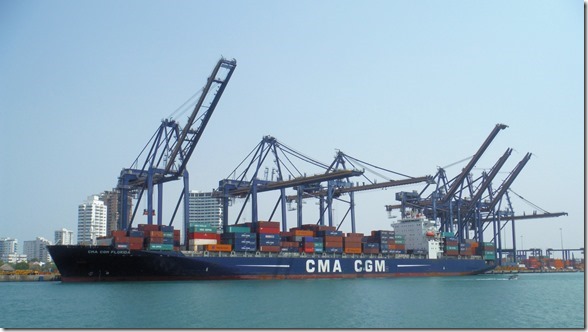
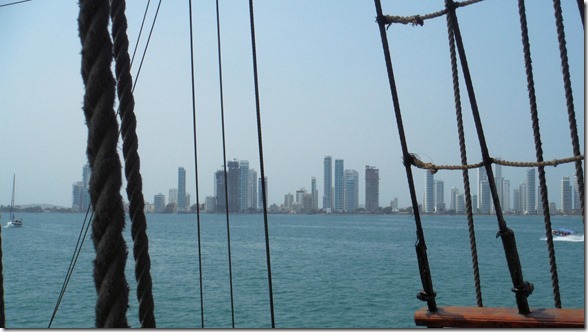
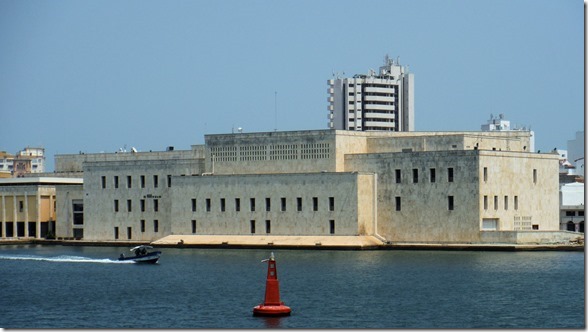
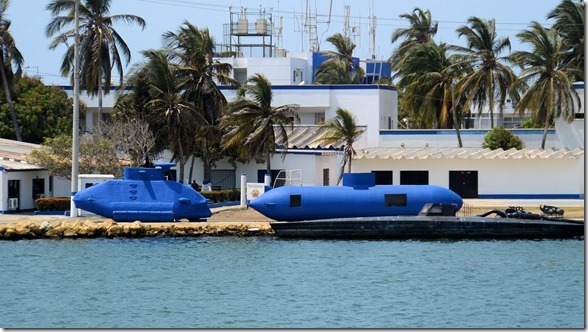
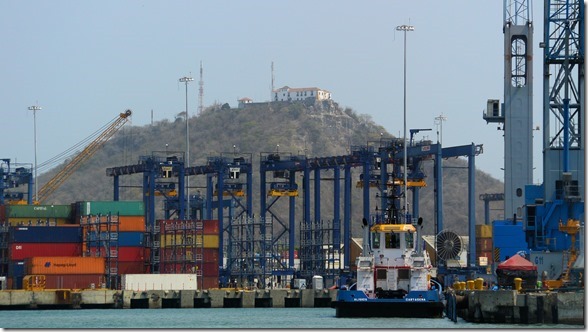
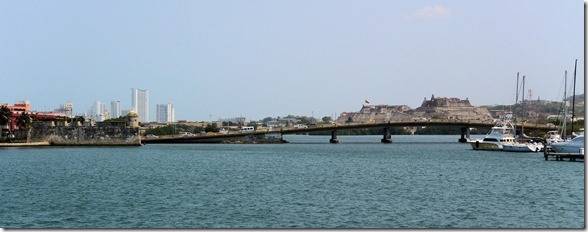
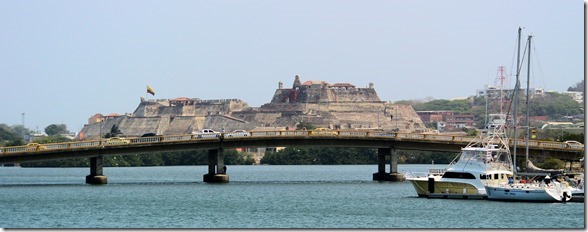
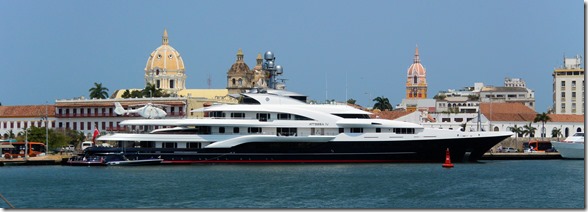
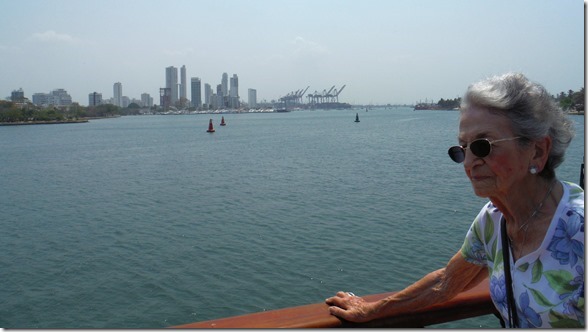
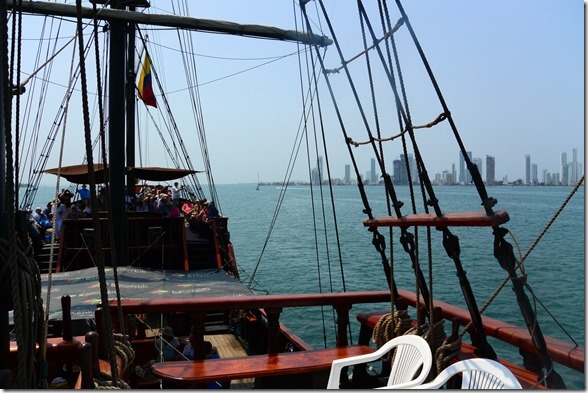
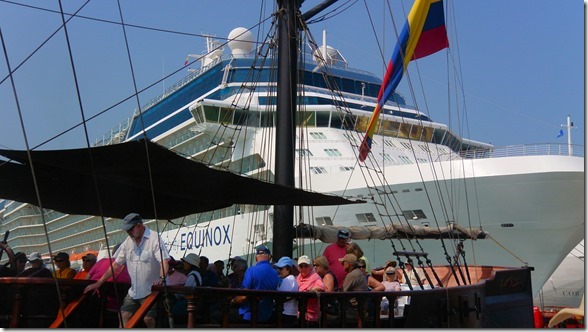
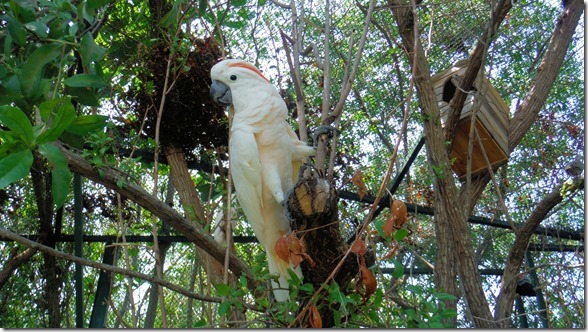
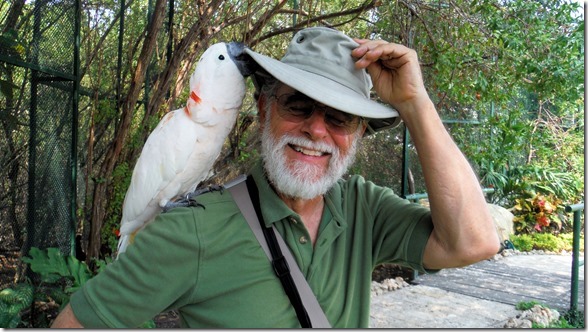
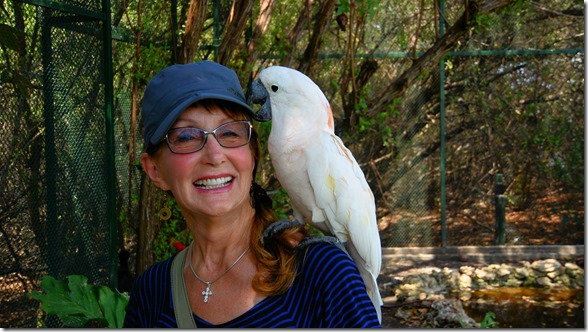
Comments
Aruba Underwater, Cartagena Above — No Comments
HTML tags allowed in your comment: <a href="" title=""> <abbr title=""> <acronym title=""> <b> <blockquote cite=""> <cite> <code> <del datetime=""> <em> <i> <q cite=""> <s> <strike> <strong>